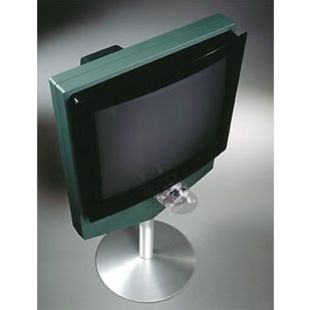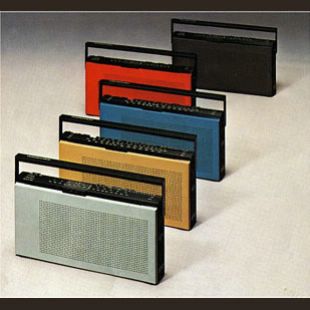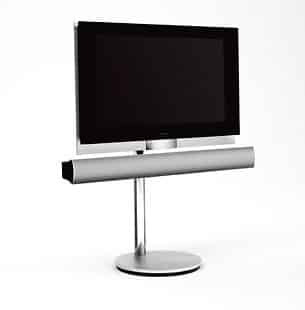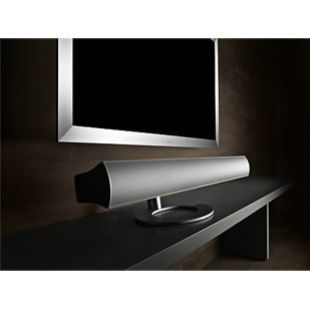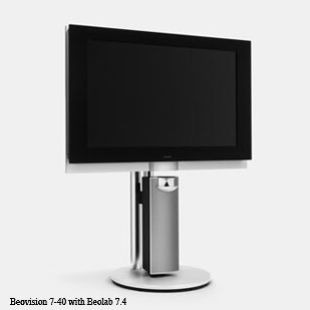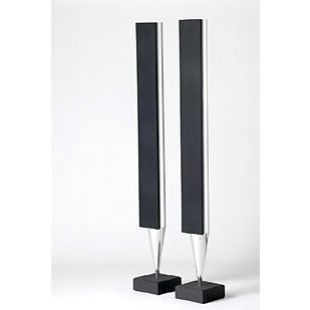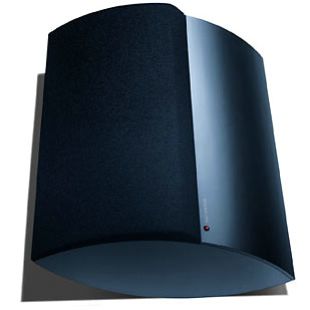BeoCenter 6-23
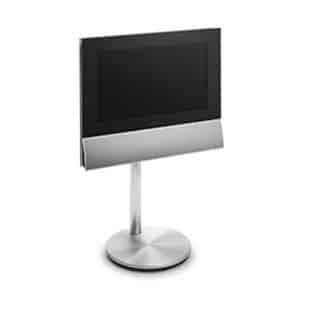
The widescreen BeoCenter 6 LCD television is available in 23” and 26” versions. Both come custom-fitted to match your needs. For example, you could have built-in FM and DAB radio in the compact 6 – 23 in your kitchen and Surround Sound and DVB-S modules in a 6-26 used for watching TV in a small living room or a bedroom. Or you could mix and match. Your ‘second television room’ just became the place to be. The integration of picture and sound in the compact cabinet creates a simple and elegant plug-and-play television concept.
Gorgeous from good morning to good night
The handcrafted cabinet of the BeoCenter 6 speaks volumes about the dedication that went into its creation. The sleek lines of the BeoCenter 6 blend in anywhere in your house. Both in your kitchen, drinking your morning coffee, or in your bedroom – enjoying the late night comedy before you go to sleep. The elegant aluminium front and frame are available in a selection of dashing colours as well as discrete aluminium, black and dark grey versions. Using its special digital input, BeoCenter 6 can function as a spectacular computer monitor that would take pride of place in any room, especially if matched with the compact BeoLab 3 or BeoLab 4 loudspeakers in striking red or blue – or perhaps the golden anodised aluminium of BeoLab 4000.
Fewer boxes. More TV and radio
The new BeoCenter 6 takes intelligent integration to a new level and introduces DAB radio options together with a TV for the first time ever. When you are listening to the radio, the screen can display available programme information. Equipped with wake-up timer and timer play the BeoCenter 6 makes the perfect choice for a second room television. A selection of wall mounting brackets and stands are available for versatile placement. The motorised floor and table stands can be controlled from the Beo4 remote control, turning the TV 35° to each side. In addition, the tilt mechanism means easy adjustment of the television up and down on the vertical axis.
The definitive BeoLink screen
BeoCenter 6 can function as a stand-alone television, or as the second-room TV in a BeoLink setup. You can enjoy all sources from the main room on the BeoCenter 6, such as DVD, digital music, etc. For instance, you can watch satellite TV in your bedroom on your BeoCenter 6 – 23, even though the satellite receiver is in your living room. BeoCenter 6 can also be used as an ‘audio link master’ that lets you access the radio function from other rooms, if linked to a pair of BeoLab speakers.
True Bang & Olufsen picture and sound
The BeoCenter 6 uses the best LCD screens available, and has been further improved with Bang & Olufsen VisionClear picture technologies, which are implemented in all TV solutions from Bang & Olufsen. Whenever BeoCenter 6 is switched on, VisionClear adjusts the image automatically in relation to light conditions in the room. Within seconds, the TV automatically adjusts contrast levels, brilliance and colour to match the light conditions at any given time. BeoCenter 6 – 23 utilises a compact one-way loudspeaker system, and BeoCenter 6 – 26 a two-way system, slightly more powerful to match the larger screen size and longer viewing and listening distances. The digital surround sound module available for BeoCenter 6 – 26 provides a digital surround sound experience in any setup with BeoLab loudspeakers. The television´s loudspeakers will in this setup function as a powerful centre speaker.
The new BeoCenter 6 takes intelligent integration to a new level and introduces DAB radio options together with a television for the first time ever. One of the best LCD screens available has been further improved with Bang & Olufsen’s own VisionClear picture technologies, to ensure the best possible picture in all situations.
When BeoCenter 6 is switched on, these picture-optimising technologies adjust the image automatically in relation to light conditions in the room. Within seconds, the television automatically adjusts contrast levels, brilliance and colour to match the current light conditions – and will carry on doing so until the television is switched off again.
BeoCenter 6 can function as a stand-alone television, or as the second-room television in a BeoLink setup. In the latter case, you can enjoy all sources from the main room on the BeoCenter 6, such as DVD, digital music, etc. BeoCenter 6 can be used as an ‘audio link master’ that lets you access the radio function from other rooms, if linked to a pair of BeoLab speakers.
Four placement options help BeoCenter 6 fit in, even in the smallest of spaces. The motorised turning function on the floor and table stand is controlled from the Beo4 remote control, and turns the television 35° to each side. In addition to this, the tilt mechanism means easy control of the television 13° up and down on a vertical axis.
The widescreen and high-definition ready LCD monitor is available in 23” and 26” versions. The integration of picture and sound in the compact cabinet creates a simple and elegant plug-and-play television concept. Connections for earphones, external entertainment sources, and BeoLab loudspeakers, are combined with digital interface for computers (DVI) – making the BeoCenter 6 the perfect companion for both work and entertainment.
When the FM radio, which is standard in the 23” version and optional in the 26” version, or the DAB radio feature, which is optional in both, is switched on, available radio text information rolls across the screen. A factory fitted wake-up timer supports the radio functionality still further.
BeoCenter 6 – 23 utilises a compact one-way loudspeaker system, and BeoCenter 6 – 26” a two-way system, slightly more powerful to match the larger screen size and longer viewing and listening distances. The digital surround sound module available for BeoCenter 6-26 provides a digital surround sound experience in any setup with BeoLab loudspeakers. The television’s loudspeakers will in this setup function as a powerful centre speaker.
Mounting Options & Stands
The tilt table mount was available for counter top mounting, designed to allow the bass port on the underside of the TV to ‘breath’. Motorised floor and table stands were complimented by a wall mount bracket which gave manual tilt and turn.
Bang & Olufsen’s preferred supplier for brackets and stands, STBbrackets, have made a range of solutions specifically for this model including a direct replacement for the tilt table mount. Distributed throughout the World by the Bang & Olufsen store network, the STB options add to the diversity of mounting options and positions available.

